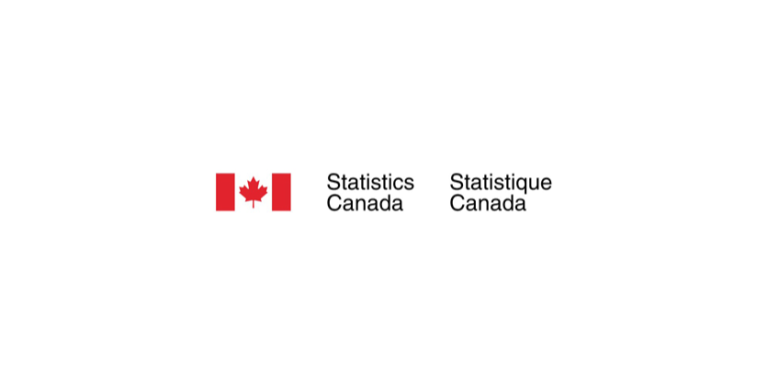Survey Results: How the Pandemic Has Changed Internet Use

June 24, 2021
The Internet was a lifeline for many Canadians in 2020. It was where we worked and studied, how we stayed in touch with loved ones, and increasingly where we shopped. While the share of Canadians (92%) using the Internet increased only slightly since 2018 (91%), how we use it and for how long each day has changed dramatically since the onset of the pandemic.
The Internet helped fill the void during the pandemic
During a year when brick and mortar stores were not always an option, many Canadians turned to the Internet for their purchases. More than four in five Canadians (82%) shopped online in 2020, up from 73% in 2018. Online spending rose by approximately one-half over this period, from $57.4 billion to $84.4 billion.
Just over one in five Canadians (21%) said they shopped online for groceries more frequently than before the pandemic, and 45% shopped more frequently for other physical goods. In fact, 13% of Canadians ordered groceries online for the first time during the pandemic and 9% bought other physical goods for the first time.
Working from home was the only option for some Canadians during the pandemic. Over two-fifths of Canadians 18 to 65 years of age (43%) said they used the Internet more often to work from home than before the pandemic and 15% used the Internet to work from home for the first time.
Without the ability to connect in person for much of the year, most Canadians used the Internet to communicate with others through instant messaging apps (76%) or social networking websites (71%). Almost two-thirds of Canadians (64%) used the Internet to make online voice or video calls, up from 47% in 2018.
With more time at home in 2020, and most in-person entertainment activities unavailable, Canadians turned to online options. Approximately four in five Canadians (83%) watched streamed content online in 2020, and over one-third (38%) watched more than 10 hours in a typical week. Just over one-third of Canadians (35%) reported playing online video games in 2020, and one in ten (10%) reported playing for more than 10 hours in a typical week.
As Canadians spent a lot of time online in 2020, more felt the need to take a break from using the Internet or to reduce their time spent on the Internet (24%) compared with 2018 (21%).
Three-quarters of Canadians bought goods online in 2020
While Canadians shopped and spent more for goods online, it is not surprising that they spent less on services such as travel arrangements or tickets for live sporting, entertainment or cultural events, most of which were limited or prohibited during the pandemic.
Physical goods such as clothing, groceries, books and electronics constituted the most frequent type of goods bought online in both 2018 and 2020. Just over three in four Canadians (76%) bought physical goods in 2020, up from 63% in 2018. Meanwhile, their spending on these goods doubled from an average of $1,165 in 2018 to $2,336 in 2020.
Just over one in six Canadians (16%) relied on the Internet for online purchases of physical goods through subscriptions in 2020, with 7% of Canadians receiving meal kit boxes on a regular basis, 5% receiving groceries such as food or beverages and 9% receiving other physical goods.
Over two-thirds of Canadians (68%) bought digital goods and services in 2020 such as music or video downloads and online data-storage services, up from 52% in 2018. Shoppers who bought digital goods and services spent on average $568 in 2020, up from $346 in 2018.
In 2020, almost one in ten Canadians (9%) used peer-to-peer accommodation services such as Airbnb and Flipkey and half (49%) ordered some type of other online service, such as food or beverages ordered from restaurants, travel arrangements, tickets for entertainment events and peer-to-peer ride services, such as Uber and Lyft.
With the onset of the pandemic, some of these services were no longer offered or access to them was restricted in parts of Canada. Although the overall share of Canadians buying “other online services” increased, the average amount spent fell from $1,470 to $1,048.
Internet shoppers support Canadian businesses during the pandemic
In 2020, 38% of Canadians reported purchasing online goods or services from a business specifically because it was Canadian, compared with 29% in 2018. This type of behaviour was most pronounced among those in the 25 to 44 age group, with almost half (49%) reporting that they bought from businesses specifically because they were Canadian.
Majority encountered a problem while ordering online
Although most Canadians shopped online in 2020, many encountered problems or barriers when doing so.
Over two-thirds of Canadians who shopped online (69%) encountered problems while ordering. The most frequent issues included the speed of delivery which was slower than indicated (48%), a foreign retailer did not sell or ship to Canada (30%) or the product ordered was of a lower quality than expected (26%).
Of the Canadians who did not shop online in 2020, almost three-quarters (73%) said they had no need to, or were not interested in ordering online, 23% were concerned about security or privacy, 18% wanted the opportunity to see, hold, or try the product before buying it, and 16% said ordering online was too difficult.
More than one-quarter of Canadians spent 20 hours or more using the Internet per week
Given the limited options for in-person activities during the pandemic, more Canadians turned to online options. In a typical week in 2020, more than one-quarter (27%) spent 20 hours or more on the Internet for personal use, up from 19% in 2018. This excluded time spent watching streamed video content and using video gaming services.
Two in five Canadians checked their phone at least every 30 minutes
The vast majority of Canadians (84%) relied on a smartphone for personal use in 2020 to communicate, to do research, or for entertainment. When asked about smartphone habits in a typical day, just over half of Canadians (53%) said that checking their smartphone was the first thing they did when they woke up and the last thing they did before going to bed (51%).
In a typical day, 43% of Canadians said they checked their smartphone at least every 30 minutes. As for younger Canadians, 71% of those 15 to 24 years of age checked their smartphone at least every 30 minutes, with 17% checking their phone every 5 minutes.
Two-thirds of Canadians used the Internet to search for health information
Although many Canadians took to the Internet for their entertainment needs, it was also used as a tool to monitor health. In 2020, over two-thirds of Canadians (69%) used the Internet to search for health information and one-quarter (25%) used the Internet to track their fitness or health, for example to count steps or plan meals. In addition, 14% of Canadians used Internet-connected wearable smart devices, such as a smart watch, Fit Bit or glucose monitoring device.
Cyber security incidents increase during the pandemic
The percentage of Canadians reporting a cyber security incident rose from 52% in 2018 to 58% in 2020. Among the incidents most often reported:
• receiving fraudulent emails or unsolicited spam (49%)
• getting redirected to fraudulent websites asking for personal information (20%)
• virus or other computer infection (10%) or
• fraudulent payment card use (7%)
Although more than half of Canadians encountered an online incident in 2020, few (2%) reported a financial loss that they did not recover.
Canadians took some steps online to protect their personal data in 2020, with almost three-quarters (74%) taking at least one of the following actions: restricting or refusing access to their geographical location (59%), denying the use of personal data for advertising purposes (57%), changing the privacy settings on accounts or apps to limit their profile or personal information (49%) and checking that the website where they share personal data is secure (45%).
Some gaps remain in Internet use
Despite the high level of Internet use among the Canadian population overall in 2020, gaps remained when looking at specific demographics and place of residence. For example, compared with the Canadian average (92%), about 62% of Canadians 75 years of age and older had used the Internet. Other population sub-groups that registered Internet use below the Canadian average were: people with a disability (84%), those not employed (85%), those living outside of a Census Metropolitan Area or Census Agglomeration (87%) and Indigenous people (88%).
Almost all Canadians living in a family household with children under 18 years of age (98%) used the Internet in 2020, compared with 80% of single-person households.
Source: Statistics Canada, www150.statcan.gc.ca/n1/daily-quotidien/210622/dq210622b-eng.htm?CMP=mstatcan











